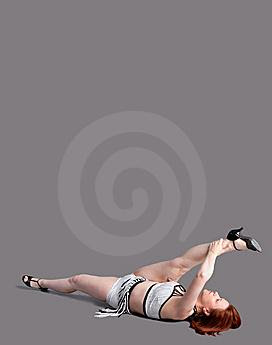



In many exercise programs, be it weight lifting for building and toning muscles or cardio vascular exercises for increasing stamina and to lose weight, most people do not perform enough stretching exercises even though stretching exercises can be performed by anyone at any age unless that person has some physical restriction to stretch. What is worse, many people do not even stretch before and after exercising. Unknown to most people, stretching also has anti aging benefits.
•Benefits of stretching exercises for muscle growth
Stretching is an important aspect of exercising and should be a part of any exercise routine and program. There are many wonderful benefits when you perform regular stretching exercises. Stretching exercises not only help you to warm up and cool down before and after your workouts, it can and will actually help your muscles to grow bigger and stronger too. Don’t believe me? Then read on.
Stretching exercises help muscle growth because stretching lengthens your muscles and thus giving your muscle fibers a greater range of motion when lifting weights. So in effect, it recruits more muscle fibers and thus causing your muscles to grow stronger and bigger from your weight training.
































